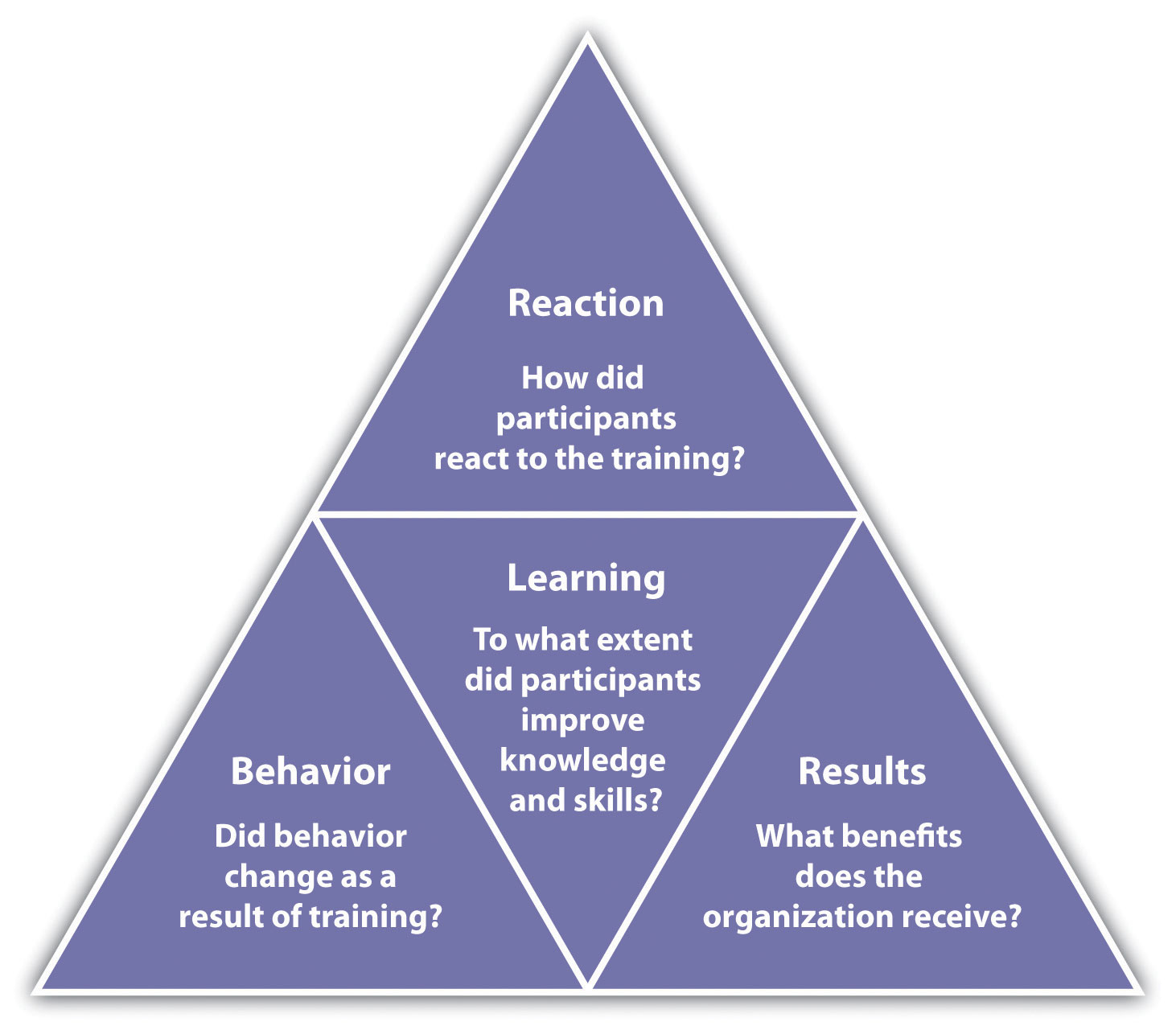Measuring training effectiveness
After we have completed training, It is important to make sure the training objectives were met and that the training was effective. Given the resources required to train employees, HR managers are increasingly required to justify their budget and show the return on investment (ROI) of their activities. For training, this involves demonstrating that the investment in training has led to increased effectiveness of the employee and, ultimately, of the organization.
Measuring Effectiveness
The classic model to measure the effectiveness of training is the Kirkpatrick model (Kirkpatrick, 2006). His model has four levels:
- Reaction: How did the participants react to the training program?
- Learning: To what extent did participants improve knowledge and skills?
- Behaviour: Did behaviour change as a result of the training?
- Results: What benefits to the organization resulted from the training?
Each of Kirkpatrick’s levels can be assessed using a variety of methods. We will discuss those next.
Level 1: Reaction
The first level, reaction, assesses whether people feel that the training was valuable. By measuring how engaged participants were, how actively they contributed, and their reaction to the training, this will help understand how well they received the training. In addition, it guides improvements to future programs. Questions to ask trainees include:
- Did you feel that the training was worth your time?
- Did you think that it was successful?
- What were the biggest strengths and weaknesses of the training?
- Did you like the venue and presentation style?
- Were the training activities engaging?
- What are the three most important things that you learned from this training?
- From what you learned, what do you plan to apply in your job?
- What support might you need to apply what you learned?
Level 2: Learning
Level 2 focuses on measuring what the trainees have and have not learned. This demonstrates how training has developed their skills, attitudes, and knowledge, as well as their confidence and commitment.
To measure how much your trainees have learned, start by identifying what you want to evaluate. Training sessions should have specific learning objectives, so those should be the starting point. You can measure learning in different ways, depending on the objectives but it’s helpful to measure it before and after training. Before the training begins, trainees can be tested to determine their initial knowledge, skill levels, and attitudes. Then, when the training is finished, a second test can measure what has been learned.
Level 3: Behaviour
This level asks HR managers to assess whether people apply what they have learned in the training. This level is also called ‘transfer of learning’ because it is the stage where the knowledge imparted in the training is ‘transferred’ to behaviours, from ‘knowing’ to ‘doing’.
This step can reveal where people might need help because behaviour can only change when conditions are favourable. Imagine that you’re assessing your team members after a training session. You see little change, and you conclude that they learned nothing and that the training was ineffective. However, it is possible that they actually learned a lot, but that the organizational or team culture obstructs behavioural change. Perhaps existing processes restricts the application of new thinking. As a result, employees do not feel confident in applying the new knowledge or see few opportunities to do so. In addition, they may not have had enough time to put it into practice. Transfer of learning is difficult to achieve. Check out this interesting TedTalk that focuses on how to help with this transfer, or as Dan Ariely (the speaker) calls it ‘the gap between what we know and what we do’:
Level 4: Results
At this level, HR managers analyze the final results of the training. This includes outcomes that the organization has decided are good for business and good for employees, and which demonstrate a good return on investment (ROI). This level is the most costly and time-consuming. The biggest challenge is to identify which outcomes, benefits, or final results are most closely linked to the training, and to come up with an effective way to measure these outcomes in the long term. For example, a retailer that trained its salespeople on various customer service elements. It would be sensible for this organization to expect that the training had an impact on the average weekly sales of these salespeople, or that the customer’s reviews of the overall store experience have improved.


